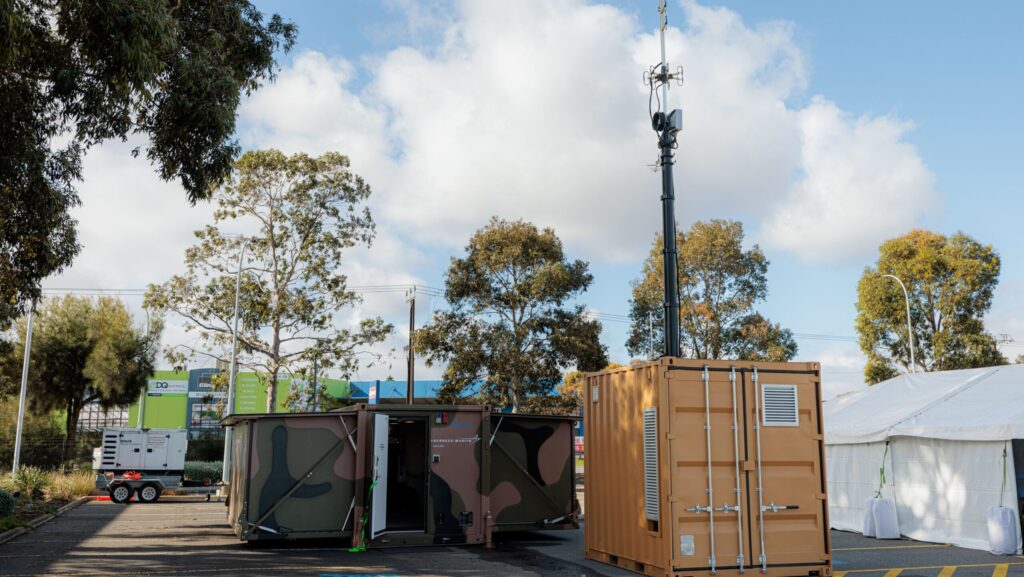
ADELAIDE — As the company’s co-founder heads to Washington to take over its US operations, a tiny and promising Australian company called Silentium has announced early delivery of its first passive radar systems to help build Australia’s Joint Air Battle Management System, known as AIR6500.
If Ukraine has taught the US Army and its allies and partners anything, it is that weapons that emit electromagnetic waves, like radar or radios, will be targeted and probably destroyed. Passive radar detects and tracks objects, as does active radar, but it does not emit a signal. That means it’s much harder to detect and can’t be used for counter-battery targeting, as can an active radar — as the Russians have demonstrated so well in Ukraine.
Silentium Defence says it’s the only company in the world delivering passive radar solutions for surveillance of sea, air, land, and space. The company‘s passive radars rely on external sources of FM radio signals, such as terrestrial radio or TV stations. And while that likely limits its usefulness in remote areas where those signals are few and far between, the company claims it has a backup plan: putting emitters away from the radar, allowing it to gather information but not provide a clear counter-strike target.
The delivery of the first iteration of the radar, which will come in a small container, demonstrates that Australia can build its own weapons, without leasing or buying them from the US or other countries, CEO James Palmer said at a presentation here. (Lockheed Martin, which is partnered with Silentium on the AIR6500 effort, provided transportation to Adelaide and lodging for Breaking Defense and other reporters.)
“Delivery of these systems clearly demonstrates that we can build world-leading, truly sovereign capability onshore here in Australia, and we can do it at a rate of relevance to the threat picture globally. The system that you see to your left is entirely designed, built and delivered here in Australia using Australian skills, Australian jobs and Australian intellectual property,” Palmer said.
“When we talk about true sovereign capability as a nation, that for my mind is what it really means: Capability that delivers back to the nation, not just in lease arrangements for access to Australian soil facilities, not just in subcontractor delivery of component parts from other systems, but in high tech jobs, local jobs, growth in our economy, export opportunities that draw value back to our nation and secure a position at the table where Australia adds true and unique value to our allied partners through world-leading capability.”
AIR6500, including the Silentium radar, is a key part of Australia’s planned missile defense capabilities. Australia awarded Lockheed Martin $765 million AUD ($487 million US) for the first phase of the $7.7 billion AUD ($5.18 billion USD) program; Lockheed believes the program will have an export market worth $83 billion AUD ($55 billion US). AIR6500 echoes US efforts to enable Joint All Domain Command and Control (JADC2), and while it will initially roll out just for the Australian Army, Navy and Air Forces, the goal is to eventually have it connect with international partners.
The Silentium Defense Maverick passive radar are the first sensors delivered to Lockheed Martin for AIR6500 and, chair of the Silentium board of directors Kim Scott noted, they arrived five months early.
“I think what you’ve seen, not only with Lockheed Martin’s performance on 6500, but the Silentium team’s performance in delivering the first capability set in the sensor world in a short period of five months from critical contracts signature to delivery of five systems is fairly astounding,” Scott said. “Certainly, for the 40 years I’ve been in defense. I’ve not seen that done previously.”
The speed of delivery clearly pleased the government customer.
“You know, gone are the days where we wait for years, and then something gets delivered. What we’ve got now is every nine months there’s going to be a release internally. And that first release will be at the end of this calendar year,” Air Commodore Benjamin Sleeman, director-general for integrated air and missile defense, said.
That will allow operators to “run an air battle and do their battle management from basically anywhere that there’s a connection. And then what we’re going to be doing is building on those smaller elements and building them up, building the architecture. It’s modular so that we’re going to do and proliferate not only the command and control the brains side of it, but also adding more and more sensors.”